Movie Review: Welcome to the Rileys (2010)
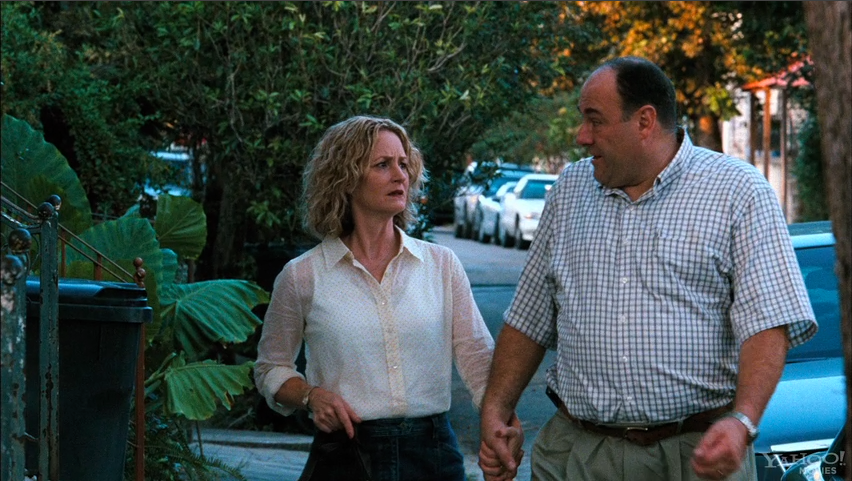
I saw Welcome to the Rileys as an advance screening in New York on October 21st, 2010. The movie was introduced to the audience as a James Gandolfini vehicle that involves a stripper. Really, that was it. Imagine my shock and horror when the credits rolled some 90 minutes (which felt like 3 hours) later - that this was a Jake Scott film and that Ally Sheedy starred in it (for all but 60 seconds).
I could write a lot about the annoying continuity errors and editing mistakes. I won't. The problem with this movie is the screenplay, the direction, the music, the pacing, and even some of the photography.
James Gandolfini and Melissa Leo deliver excellent, sympathetic performances. But they are misdirected. They play a husband and wife living in Indianapolis. James Gandolfini sometimes has a southern accent, and sometimes reverts to his native Jersey accent. This is not his fault. It's Tony Scott's. Gandolfini plays Doug Riley, a money-wasting, risk-taking, yet also oddly grounded and disciplined plumbing supply salesman.
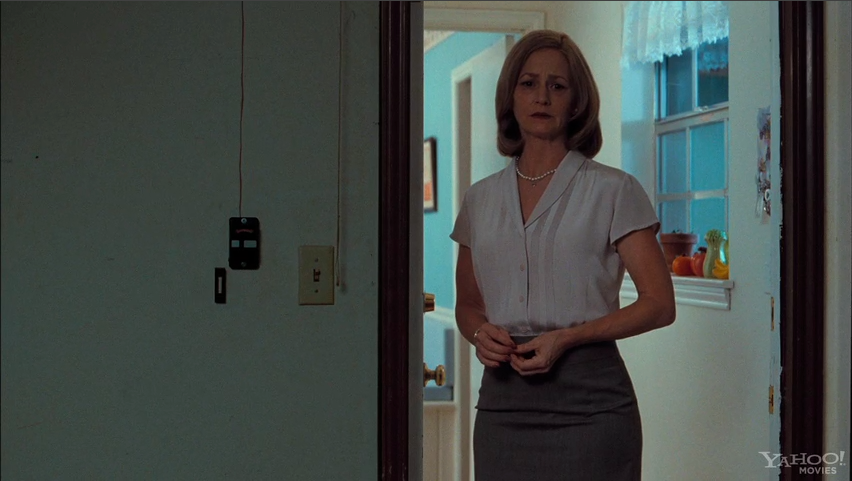
Melissa Leo's character, Lois, is a traumatized, sad, lonely woman who has been married to Mr. Riley for 29 years. We don't know how long she has refused to go outside, but it is well established (perhaps too established) that she has not left the house since the Riley's teenage daughter died in a fiery car accident. We get a glimpse of the auto accident's aftermath in the film's first shot. However, this being a Gandolfini movie, the audience will be forgiven for wondering if the burning Lincoln Town Car is a flash forward to a movie-ending car bomb. Maybe that's a stretch, but how was I supposed to know that the burning car was a flashback? I blame the director.
But back to Melissa Leo's character. Doug Riley goes on a business trip to New Orleans, but leaves a lot of emotional healing left unfinished at home. Following an emotionally empty phone conversation with Doug, Lois finally builds up her courage to leave her house and drive over 1,000 miles to have a much needed talk with her road warrior husband. But Jake Scott's misdirection appears once again. Being homebound for over 10 years, Lois is understandably clumsy and socially awkward. But is it played for laughs or is it supposed to be depressing and sad? The audience went from chuckles to silence multiple times during her 'escape' sequence. We see her taking many pills before heading out. She tries to get comfortable in her husband's Cadillac, but falls asleep before she can start the engine (did the pills do this? is this some timid suicide attempt?). She finally gets on the road and talks to a creepy man in a diner. The movie almost portrays the conversation as a positive step for her, as if being hit upon by a 50 year old guy who looks like Dennis Miller's brother is a nice thing.
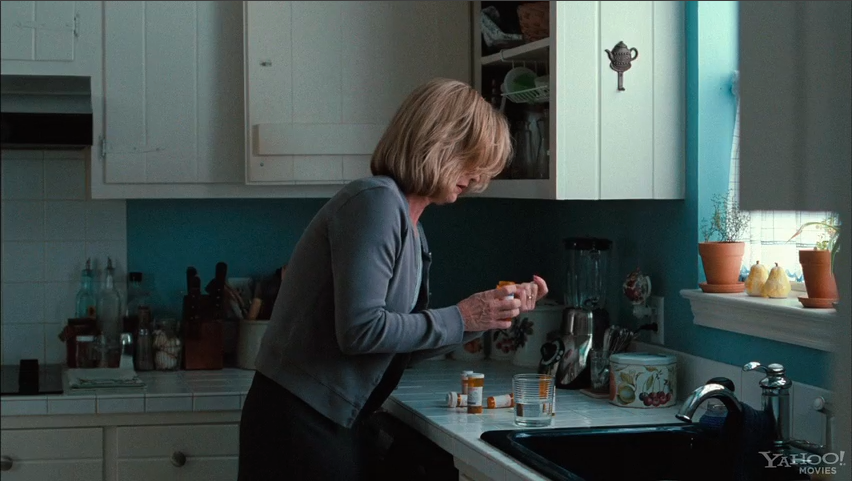
I think the screenwriter was trying to tell us that she is socially inexperienced and vulnerable so it makes us uncomfortable to watch her fail to tell the man to leave her alone. But I also sense that Jake Scott had no clue what he wanted, and so we see a slow conversation that even includes the characters saying 'bye' to each other (clearly a more skilled director and editor would have cut that seconds earlier).
Welcome to the Rileys contains many strange moments like this, in which characters each say "bye" to each other multiple times over the phone, or showing characters hanging up a phone. This movie simply does not follow standard cinema grammar. It would be wonderful if it was done to make us feel uncomfortable and prevent us from picking up the film's beat and pacing. But I think it is simply poor directing and editing.
Doesn't anyone watch the entire film in the editing room anymore? Don't they burn a DVD and watch the rough cut at home? Do they watch it a couple of times, sit on it for a weekend, and then watch it again? In a Criterion interview for his 2008 film Che, Steven Soderbergh expressed his opinion that a declining number of directors watch their movie from beginning to end during the editing process. I agree with him.
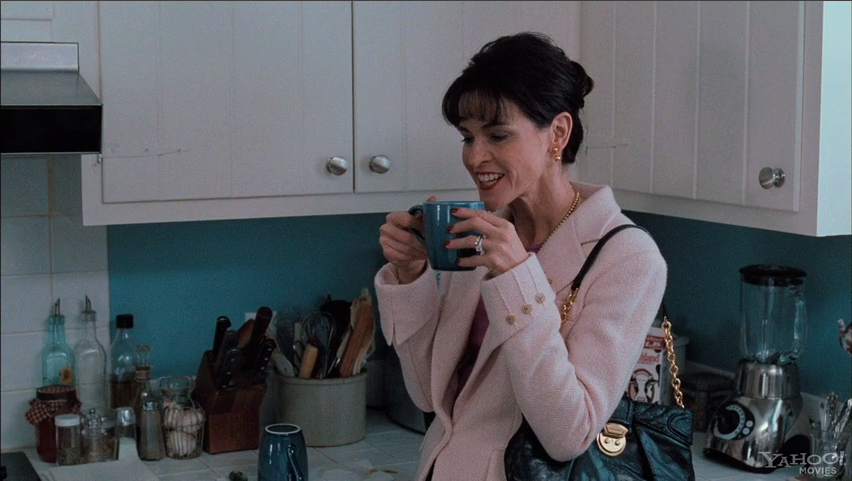 Oh where did your character go, Ally Sheedy?
Oh where did your character go, Ally Sheedy?
Did the filmmakers really need to cut out Ally Sheedy's character, but include every phone conversation -from first ring to hang up- simply to extend the film to 90 minutes? Did they really have a shortage of exterior establishing shots, so when we cut from one interior scene to another, we would understand that the location has changed? Think I'm kidding? Watch the movie (if you can get past the awful dialogue of the early diner scene 3 minutes in). I know very little about filmmaking, but was there a Second Unit and if so, what was their work to party ratio?
And when Mrs. and Mr. Riley finally have their reunion in New Orleans, there is zero emotional impact. There is a long build-up to the reunion, but then nothing happens when they finally embrace. In fact, their fighting scenes have more passion and truth than any of their embraces. Again, I blame the director.
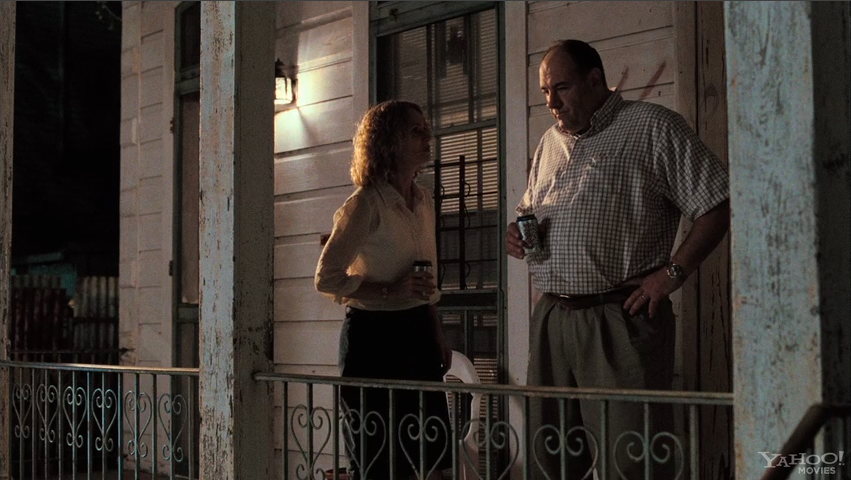
A poor product like this should not earn Jake Scott a feature director's chair anytime soon. He is a skilled TV commercial and music video director. But this a terrible film. It makes one of his father's least successful films, Matchstick Men (2003), look very good in comparison (and remember that film had a similar parent-daughter theme running through it).
Do you want to see a slow family drama done really well? Watch Mike Leigh's Another Year (2010). It has some of the same themes of compassion and nurturing. And note just how better edited, directed, and paced that film is compared to this terribly mismanaged drama.